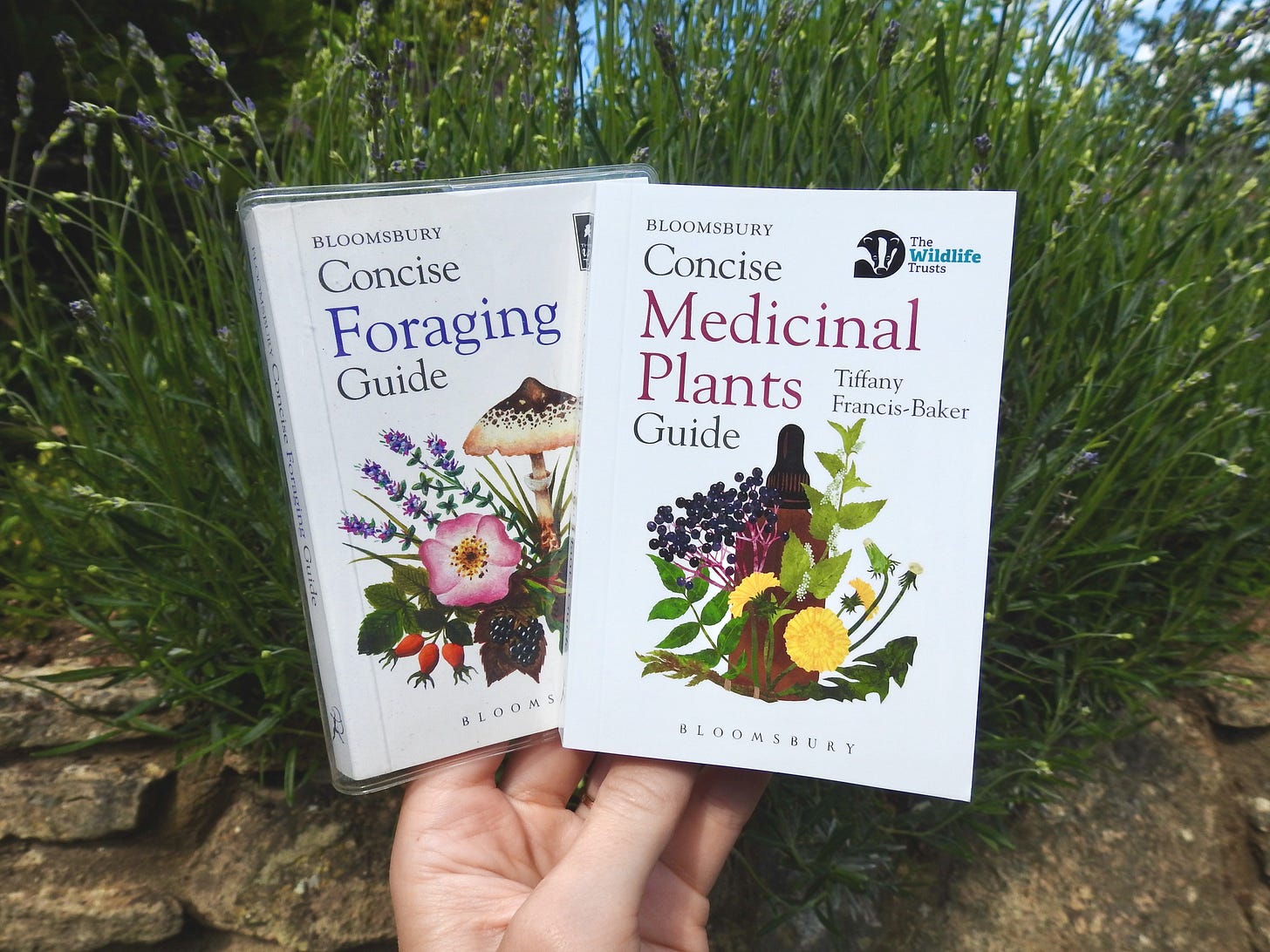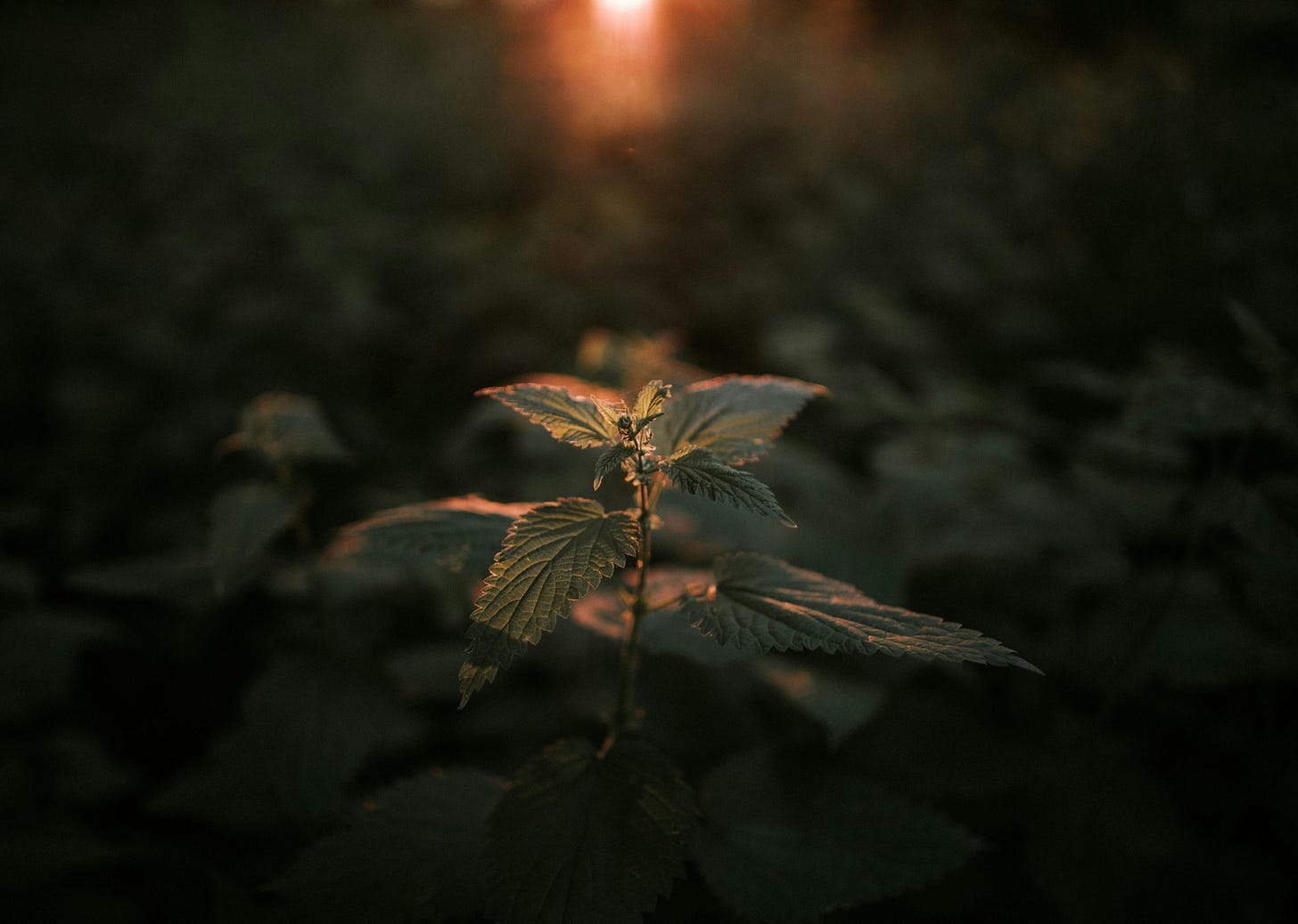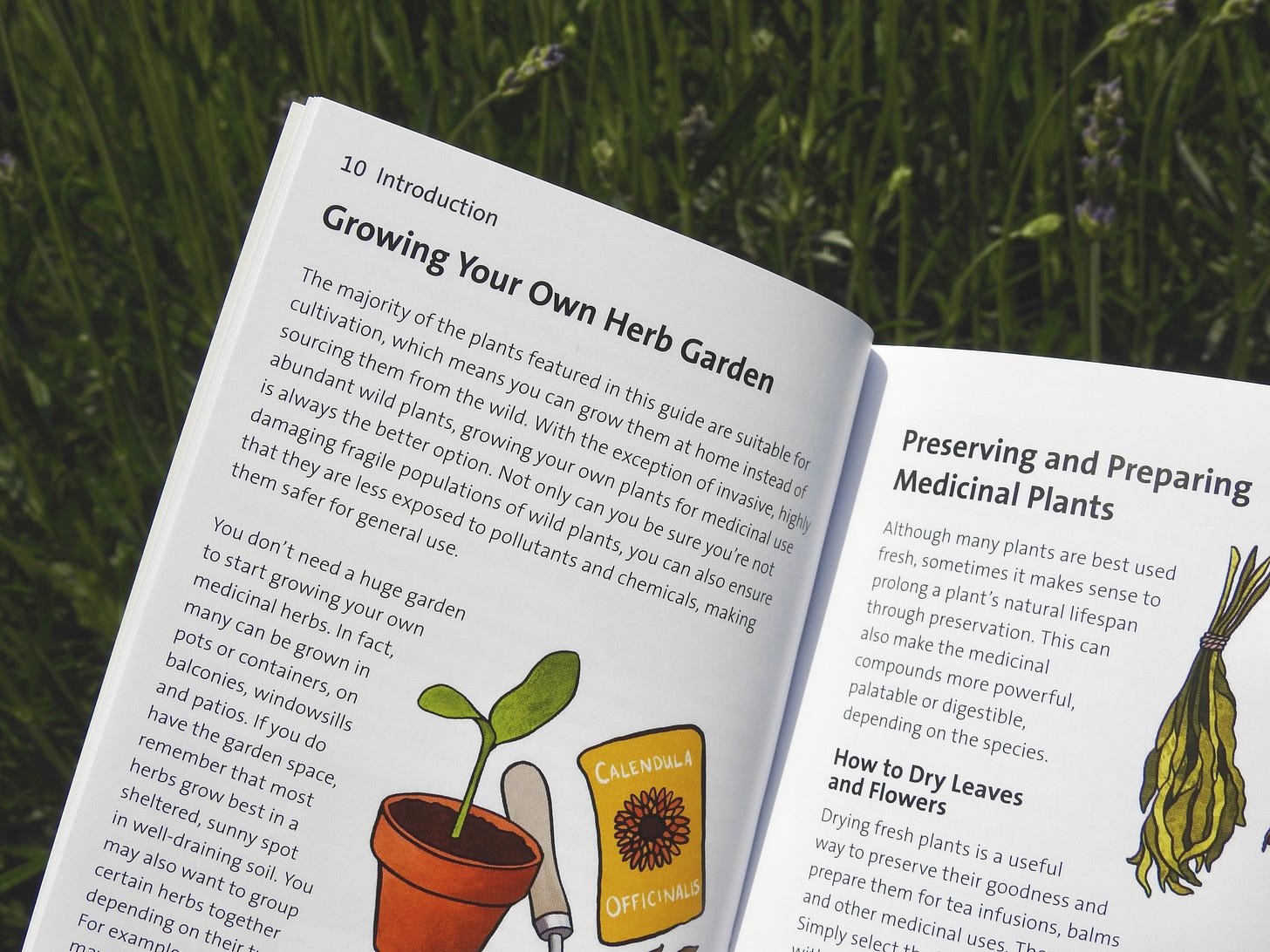5 medicinal plants already growing in your garden
There's no such thing as a weed
I’m back into running at the moment. Adulthood brings inevitable turbulence, and we currently have a few things going on that have resulted in me completely switching off the news after weeks of monitoring it obsessively. Instead, I’ve been spending lots of time running outdoors with my dogs, listening to very little besides the beat of my trainers on heather-fringed sand and the last calls of the cuckoos, who will start migrating back to Africa this month.
I’ve been seeking out new plants, too, because they have been at the forefront of my mind since my second book in Bloomsbury’s Concise series was released in May. Concise Medicinal Plants is my new pocket-guide to all the plants around the UK and Europe that have traditional or scientific uses in the field of medicine.
Today I thought I’d share five of those species with you, all of which are so abundant and easy to find, you are likely to find them already growing somewhere in your garden. For full details on identification, distribution and toxicity of these plants, I recommend treating yourself to a copy of the book or researching the subject further elsewhere. I’ve also included a useful disclaimer at the end of this post with safety advice on foraging and growing new plants.
Rosemary (Salvia rosmarinus) ↑
In aromatherapy, rosemary oil is traditionally associated with improving cognitive function and memory. One theory is that inhaling rosemary oil may help prevent the breakdown of acetylcholine, a brain chemical important for concentration and memory. It has also been used topically to soothe headaches and as an insect repellent.
Dandelion (Taraxacum officinale) ↑
The leaves and flowers are rich in vitamins, particularly A and C. The roots and leaves have diuretic properties and have historically been made into a tea infusion. Dandelions have also been used as a remedy for kidney and liver ailments.
Pot Marigold (Calendula officinalis) ↑
Traditionally valued for its antiseptic, antifungal and antibacterial properties, pot marigold has been used in poultices and compresses to treat burns, ulcers, chilblains and impetigo. It can also be made into a tincture and used as eyedrops or a mouthwash to treat gum infections and ulcers.
Common Nettle (Urtica dioica) ↑
All aerial parts are rich in vitamins A and C, as well as iron and other minerals. It has traditionally been used to treat a range of ailments, including inflammation, enlarged prostate gland, hay fever and high blood pressure. It may also help treat urinary tract infections and may protect the liver against toxins.
Elder (Sambucus nigra) ↑
Berries are often taken as a supplement to treat cold and flu symptoms. Historically, the flowers and leaves have also been used to relieve pain and swelling, while the bark was used as a diuretic, a laxative and to induce vomiting.
If you’d like your own little copy of Concise Medicinal Plants, you can do so in all the usual places! My favourite place to shop online is Bookshop.org, direct from Bloomsbury, or head to your local indie bookshop and support them. Thank you!
Using Herbal Medicines
Just like conventional medicines, herbal medicines may have a significant effect on the body and can be potentially harmful if not used correctly. They should, therefore, be used with the same caution and respect as conventional medicines. If you are seeking help for any illness or health condition, it is wise to speak to both herbal and Western medical practitioners in order to find the best treatment for you. It is particularly important to check with a conventional doctor before taking herbal remedies if you have any pre-existing medical conditions, or if you are having radiotherapy, surgery in the near future, other cancer treatments or if you are pregnant or breastfeeding. Herbal medicines can cause problems if you are taking conventional medicines at the same time, such as making them less effective or causing them to trigger unexpected side effects. Not all herbal medicines are regulated if you source them from somewhere else, and scientific evidence for the effectiveness of herbal medicines is generally limited. There are, however, plenty of people who find them helpful.
Growing your Own Herb Garden
The majority of the plants featured in this guide are suitable for cultivation, which means you can grow them at home instead of sourcing them from the wild. With the exception of invasive, highly abundant wild plants, it is always the better option to grow your own plants for medicinal use. Not only can you be sure you’re not damaging fragile populations of wild plants, you can also make sure they are less exposed to pollutants and chemicals, making them safer for general use. You don’t need a huge garden to start growing your own medicinal herbs. In fact, many can be grown in pots or containers, on balconies, windowsills and patios. If you do have the garden space, remember that most herbs grow best in a sheltered, sunny spot on well draining soil. You may also want to group certain herbs together depending on their type or needs. For example, the native Mediterranean plants may thrive best in full sun and poor soil, while quick-spreading herbs like mint or lemon balm should be contained in their own dedicated area to stop them taking over the garden.
Foraging Wild Plants
If you are sourcing plants from the wild, remember to only pick the amounts you need to ensure plant populations remain healthy, and leave plenty for the birds and wildlife. Familiarise yourself with the legal implications of picking wild plants in your country. It’s also important to recognise the difference between picking a leaf or flower and uprooting the entire plant. A partially-picked plant can usually regenerate and survive, but an uprooted plant is gone forever. Avoid taking plants from fragile nature reserves or wildlife-sensitive areas. Do not trespass on private land, and avoid searching along the edges of large agricultural fields which have often been treated with chemicals. Similarly, watch out for popular dog walking routes. And remember - if you’re not completely sure of a species, don’t pick it. There are plenty of other resources - including the internet - that can help you clarify what you’ve found, but if you’re still not completely sure about a new species, it just isn’t worth the risk.









